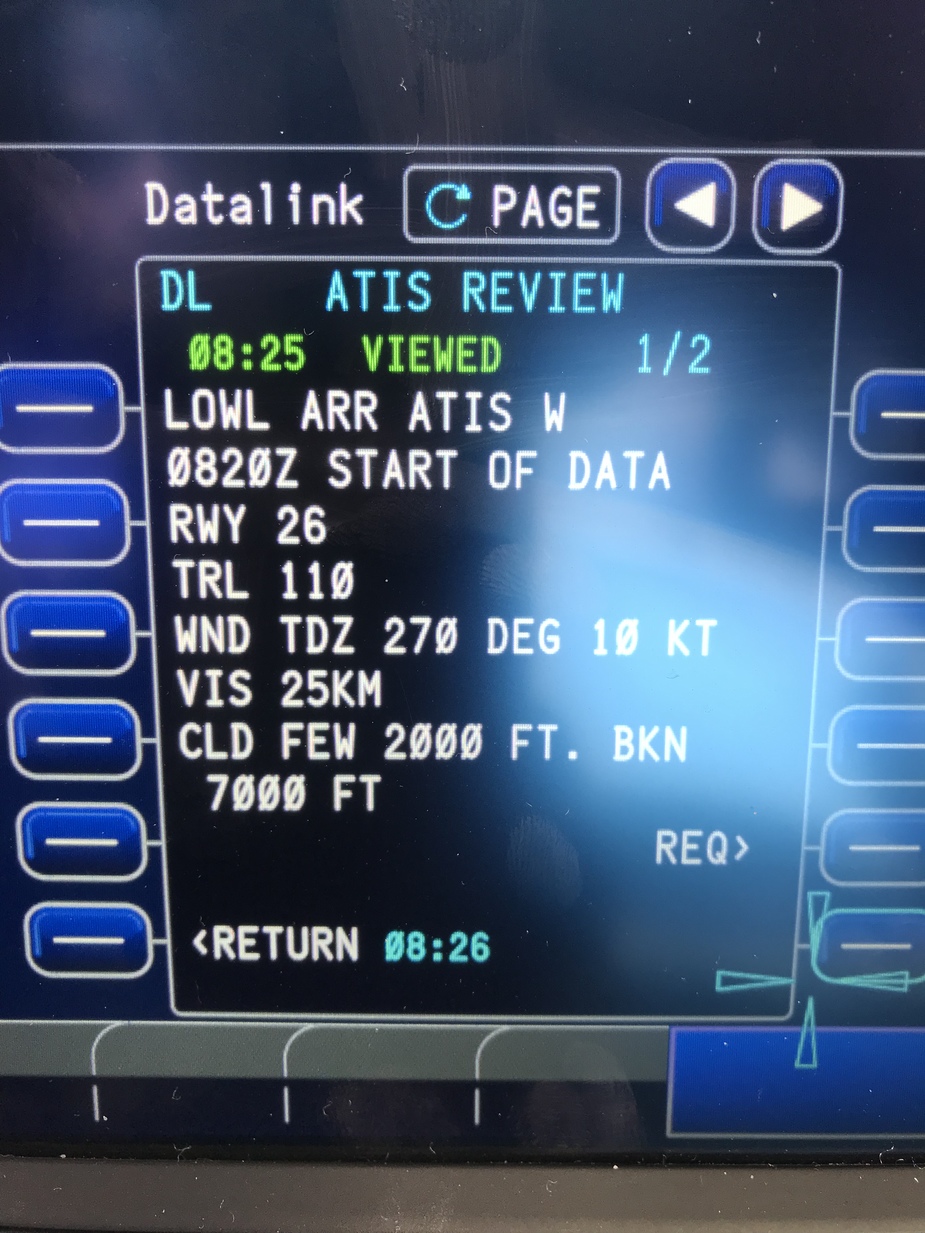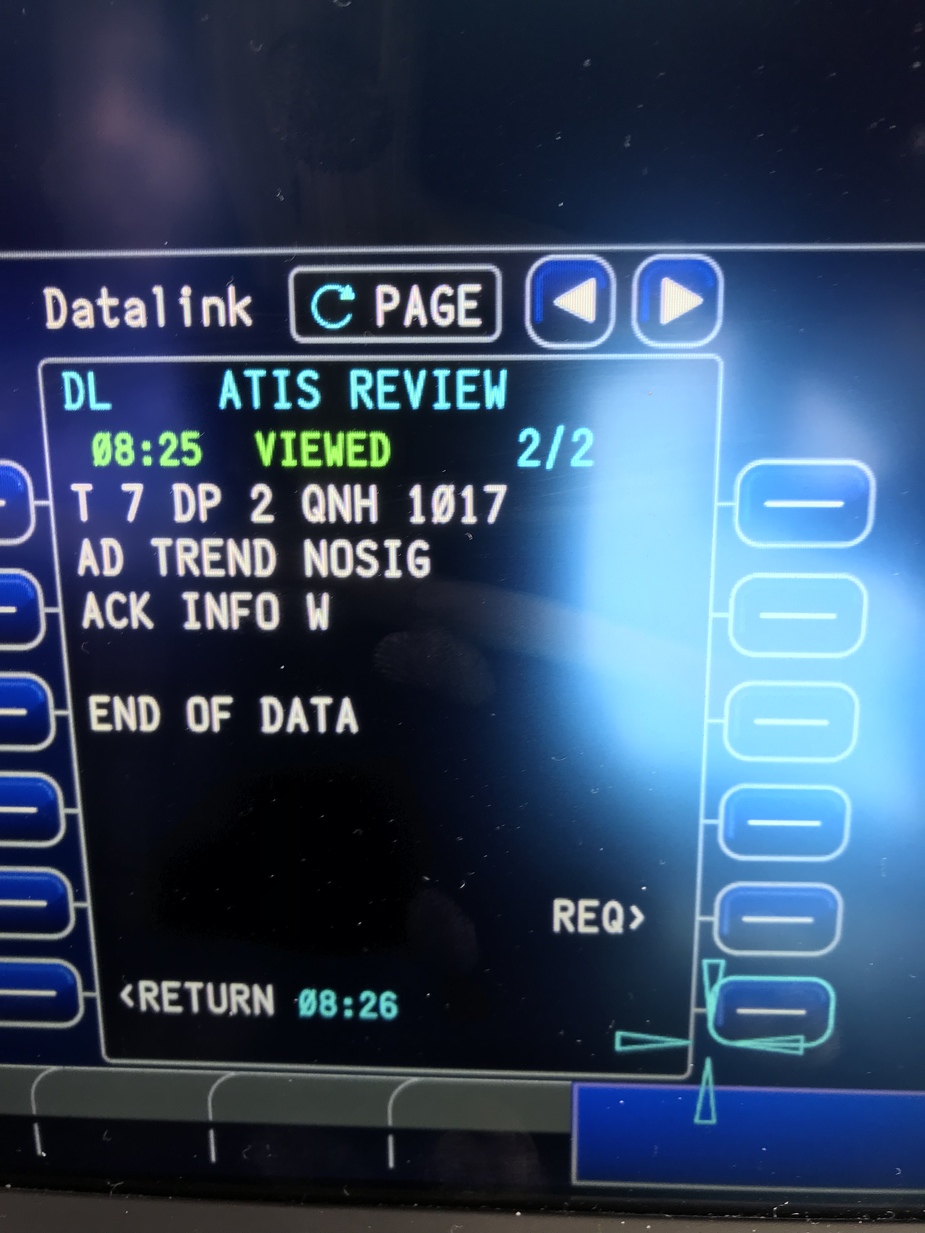Peter wrote:
Isn’t that data over the GSM network? If you have that, there is no issue; everything is free, basically…
Not sure what you’re referring to but the inflight wx here comes via ADS-B and, as @Silvaire says, is one click away in FF. Brilliant. However, that doesn’t absolve you from getting the actual ATIS for a towered airport. At a non-towered airport it’s of course all you need.
Obviously nobody is going to make an initial call to an towered airport without tuning and copying ATIS and current letter by radio first. In the US that is the customary (generally only) way by which you get the altimeter setting and runway(s) in use.
Sometimes I still do call recorded ATIS or ASOS by phone before departure but not often any more when I can get the useful planning info from my iPhone and Foreflight, or iPad and Foreflight via ADS-B In when airborne.
I don’t talk to ATC much en route, it’s not usually beneficial to my flying, and I don’t want more than one radio on the plane, for simplicity and weight saving. So it’s no issue or distraction to check ATIS when inbound before making the initial voice call to tower.
Silvaire wrote:
Obviously nobody is going to make an initial call to an towered airport without tuning and copying ATIS and current letter by radio first. In the US that is the customary (generally only) way by which you get the altimeter setting and runway(s) in use.
If you get D-ATIS you don’t need to call. And if you get PDC, you call for taxi only.
This looks like aviation being stuck with last-century technology and being fleeced by artificial monopolists again.
Like AFTN, fantastic for its time, but obsolete by decades.
Why not use satphone SMS?
Probably a lack of will to develop the equipment, standardise the interfaces, etc.
terbang wrote:
Interesting, I didn’t know that. Out of curiosity, how does it work? Can you choose from different providers and do you have a SIM card in that box like in a cell phone?
There are essentially two providers ARINC and SITA. They enable your tail number and then you set your provider in the avionics. As the aircraft flies it then has a search group of frequencies it uses to connect to. Over that network, you can send preset ACARS messages which can be anything from email to getting ATIS, out and in messages. You can also receive PDC clearances in the US and request DCL in europe.
For CPDLC you log into the specific region which essentially sets up an ATC to aircraft connection over which clearances can be sent such as “climb FL350”.
CPDLC uses standard equipment in the US. The airport has to have the equipment. If the aircraft is equipped with CPDLC and the flightplan includes the appropriate codes for DCL (Departure Clearances), that is all that is needed and any outfit can file the flightplan. The pilot logs into the system and gets their clearance. PDC works differently in that there is a service provider and when a clearance is available, ATC forwards the clearance to the service provider who in turn provides the clearance to the pilot using a variety of methods. With PDC, other than the departure (SID, etc), the only clearance that is allowed is as filed, so any requirement for a reroute will force the pilot to use the radio to obtain the clearance. ForeFlight provides a PDC service using Satcom as the provider. We register the aircraft with Satcom and they notify the FAA who maintains a list of call signs or registration numbers. When a flightplan is filed for a PDC aircraft, ATC forwards the clearance to Satcom who in turn forwards it to ForeFlight. We then send an SMS to the pilot with the PDC clearance.
With CPDLC, if the aircraft is equipped, the flightplan can be filed thru anyone. In the US, the aircraft must have an LOA or Opspec approval and the pilots have to be trained to use the equipment. Because of costs of the hardware and FMS (I am guessing in the multiples of hundreds of thousands of $), only air carrier or top of the line corporate jets have this equipment. ENR (Enroute) CPDLC is just beginning to roll out in the US with two centers in test phases. This requires more training and approvals for the aircraft and crew as well as training for controllers. This technology is mostly being used now for Oceanic and the North Atlantic Route system where CPDLC ENR and ADS-C using Satellite Com along with meeting performance standards for RCP and RSP to get best routes. There is also an ADS-B test underway using LEO in the North Atlantic.
In the US, about 70+ airports support both CPDLC DCL or PDC. Aircraft can indicate which they prefer in the Flightplan. PDC is available for the lower end aircraft, so for example, I have PDC for my Bonanza, but I just don’t frequent the major airports where the service is provided. It will be nice when GA type aircraft can receive electronic clearances, but that will not happen for all but a handful of airports and I don’t expect it will ever happen using CPDLC.
We are making great strides in getting clearances to GA aircraft at non towered airports as by this summer, every airport will have a direct phone number to call ATC at non towered airports or at towered airports when the tower is closed. Maybe next we can get an SMS version of PDC for non towered operations.
NCYankee wrote:
With CPDLC, if the aircraft is equipped, the flightplan can be filed thru anyone. In the US, the aircraft must have an LOA or Opspec approval and the pilots have to be trained to use the equipment. Because of costs of the hardware and FMS (I am guessing in the multiples of hundreds of thousands of $), only air carrier or top of the line corporate jets have this equipment.
A large number of FMS eg PL21 and G3000 are capable but you do need the digital VHF hardware. An M2 for example can be capable. It is not really particularly useful unless part of FANS/1A for oceanic operations which involves far more than just a datalink.
In case anyone is interested, here is what Digital ATIS looks like on an eCDU display. CPDLC works the same way. In this case it is essentially a simulated Collins or Honeywell control display unit.


Ahh Linz ;)
Brrr cold. Icemen time. After this it will be summer.
If interested I can post some PDC, CPDLC, OCA (NAT HLA clearance), KUSA PDC (we load that one directly into the FMC route – „load/execute“) screenshots from work.